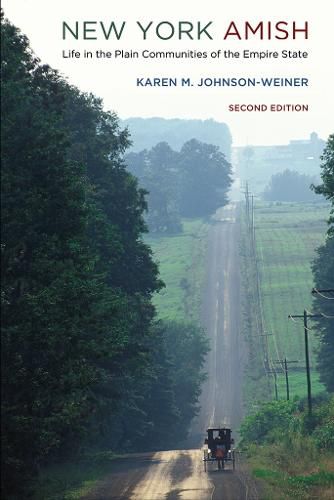Readings Newsletter
Become a Readings Member to make your shopping experience even easier.
Sign in or sign up for free!
You’re not far away from qualifying for FREE standard shipping within Australia
You’ve qualified for FREE standard shipping within Australia
The cart is loading…






Tracing Amish settlement in New York from the nineteenth century to the twenty-first, Karen M. Johnson-Weiner draws on more than thirty years of participant-observation, interviews, and archival research to introduce the Amish to their non-Amish neighbors. In the last decade, New York State has had the fastest-growing Amish population. This work highlights the diversity of Amish settlement in New York State and the contribution of New York’s Amish to the state’s rich cultural heritage. The second edition of New York Amish updates settlement areas to acknowledge recently established communities and to demonstrate the impact of growth, schism, and migration on existing settlements. In addition, chapters treating external and internal challenges to Amish settlement and the challenges Amish settlement poses to neighboring non-Amish communities have been updated, and a new chapter looks to the future of New York’s Amish. All maps have been updated, and a new map showing all of New York’s Amish communities has been added.
$9.00 standard shipping within Australia
FREE standard shipping within Australia for orders over $100.00
Express & International shipping calculated at checkout
Tracing Amish settlement in New York from the nineteenth century to the twenty-first, Karen M. Johnson-Weiner draws on more than thirty years of participant-observation, interviews, and archival research to introduce the Amish to their non-Amish neighbors. In the last decade, New York State has had the fastest-growing Amish population. This work highlights the diversity of Amish settlement in New York State and the contribution of New York’s Amish to the state’s rich cultural heritage. The second edition of New York Amish updates settlement areas to acknowledge recently established communities and to demonstrate the impact of growth, schism, and migration on existing settlements. In addition, chapters treating external and internal challenges to Amish settlement and the challenges Amish settlement poses to neighboring non-Amish communities have been updated, and a new chapter looks to the future of New York’s Amish. All maps have been updated, and a new map showing all of New York’s Amish communities has been added.